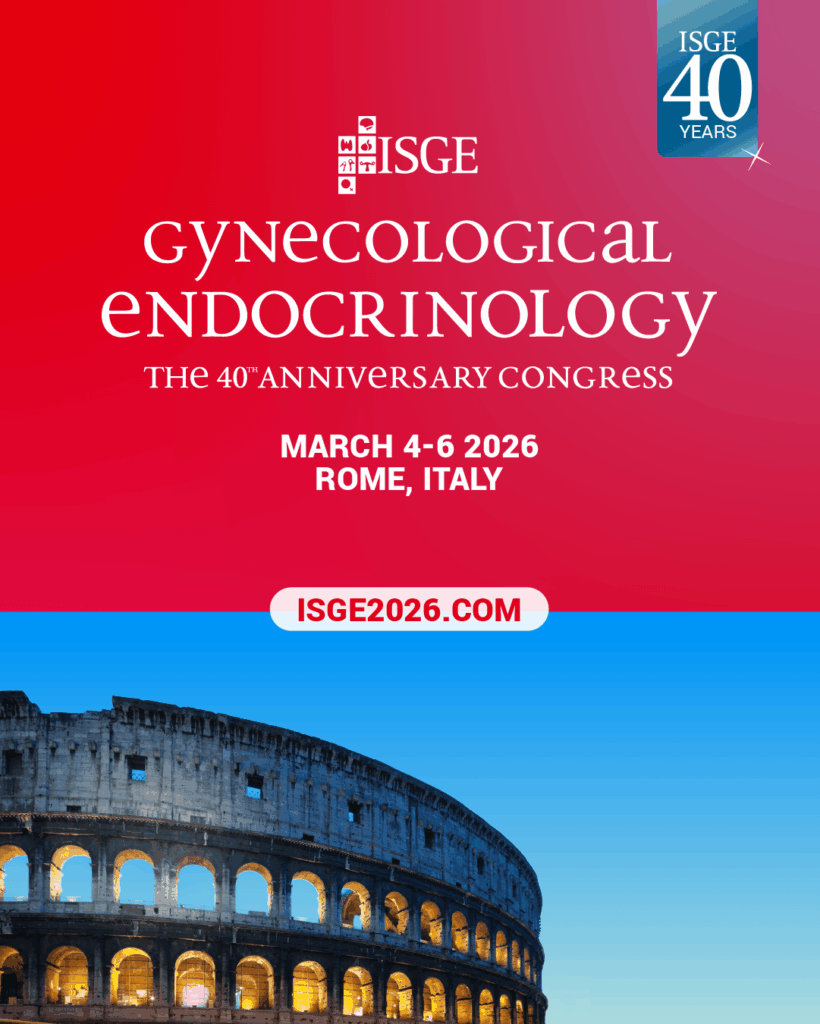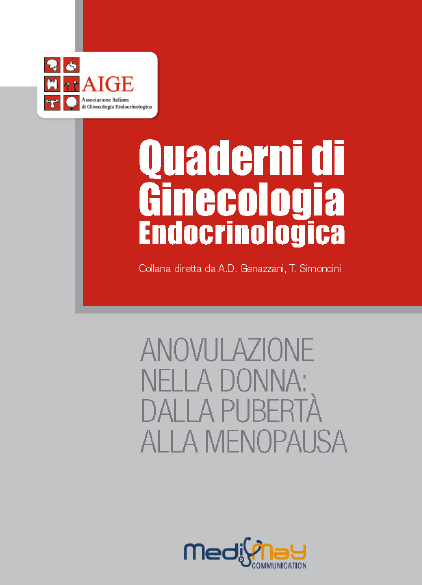-
Krzysztof Katulski, Adam Czyzyk, Agnieszka Podfigurna-Stopa, Andrea R. Genazzani, Blazej Meczekalski
Pregnancy complications in polycystic ovary syndrome patients
Abstract
Infertility is a widely disputed problem affecting patients suffering from polycystic ovary syndrome (PCOS). As a serious dysfunction, it frequently occurs in PCOS patients. It is, therefore, important to devote more attention to pregnancy in PCOS sufferers. According to various data, the risk of miscarriage in PCOS women is three times higher than the risk of miscarriage in healthy women. Unfortunately, the risk of most frequent pregnancy pathologies is also higher for PCOS patients, as gestational diabetes (GD), pregnancy-induced hypertension and preeclampsia, and small for gestational age (SGA) children. Impaired glucose tolerance and GD in pregnant PCOS patients occur more frequently than in healthy women. A quadruple increase in the risk of pregnancy-induced hypertension linked to arterial wall stiffness has also been observed in PCOS patients. The risk of pre-eclampsia, the most severe of all complications, is also four times higher in those suffering from PCOS. Pre-eclampsia is also more frequent in patients presenting additional risk factors accompanying PCOS, such as obesity or GD. At that point, it should be mentioned that PCOS patients are under 2.5 higher risk of giving birth to SGA children than healthy women. It appears that SGA can be linked to insulin resistance and insulin-dependent growth dysfunction. Therefore, PCOS pregnant women are patients of special obstetrical care.
-
Jerzy Sowinski, Nadia Sawicka-Gutaj, Paweł Gutaj, Marek Ruchała
The role of free triiodothyronine in pathogenesis of infertility in levothyroxine-treated women with thyroid autoimmunity – a preliminary observational study
Gynecol Endocrinol, 2015; 31(2): 116–118Abstract
Introduction: The aim of this study was to analyze the possible role of free triiodothyronine (FT3) in infertility and in levothyroxine-treated (LT4) euthyroid women with Hashimoto thyroiditis (HT).
Methods: It is an observational retrospective case control study. Twenty one euthyroid women with HT on LT4 replacement therapy and a medical history of idiopathic infertility were included into the study. To achieve higher FT3 level, the dose of LT4 was increased in every patient. Fifteen fertile women with HT on LT4 replacement therapy served as a control group.
Results: At baseline in the study group mean thyroid stimulating hormone (TSH) level was 1.96 mU/ml ± 0.84 mU/ml and mean FT3 was 4.07 pmol/l ± 0.78 pmol/l. The mean TSH level after the increase of LT4 was 0.60 mU/ml ± 0.45 mU/ml (p50.0001), and the mean FT3 was 5.12 pmol/l ± 0.77 pmol/l (p¼0.0001). Baseline TSH in the study group was higher than in controls (p50.0001) and baseline FT3 in the study group was lower than in controls (p<0.0003).
Conclusions: Relatively low levels of FT3 in women with HT on LT4 replacement therapy may
contribute to higher infertility rates. -
Mark E Molitch
Management of the pregnant patient with a prolactinoma (Download)
Eur J Endocrinol (2015) 172: R205–R213Abstract
A woman with a prolactinoma is usually infertile. Dopamine agonists usually restore ovulation and fertility and such treatment generally is preferred over transsphenoidal surgery because of higher efficacy and safety. Cabergoline is usually preferred over bromocriptine because of its better efficacy with fewer adverse effects. Either drug increases the rates of spontaneous abortions, preterm deliveries, multiple births, or congenital malformations over what may be expected. However, the number of pregnancies reporting such experience is about sevenfold greater for bromocriptine. Tumor growth causing significant symptoms and requiring intervention has been reported to occur in 2.4% of those with microadenomas, 21% in those with macroadenomas without prior surgery or irradiation, and 4.7% of those with macroadenomas with prior surgery or irradiation. Visual fields should be assessed periodically during gestation in women with macroadenomas. If significant tumor growth occurs, most patients respond well to reinstitution of the dopamine agonist. Delivery of the baby and placenta can also be considered if the pregnancy is sufficiently advanced. Transsphenoidal debulking of the tumor is rarely necessary.
-
Rebecca S. Usadi, Kathryn S. Merriam
On-label and off-label drug use in the treatment of female infertility
Fertil Steril 2015;103:583–94Abstract
Female infertility affects millions of couples worldwide and is estimated to account for one-third of all cases of infertility. The purpose of this article is to review the uses of both off-label treatments and those approved by the US Food and Drug Administration for female infertility, by examining the mechanism of action, the side effect profile, fetal anomaly risks, and contraindications for the various drugs.
-
Wendy Vitek, Snigdha Alur, Kathleen M. Hoeger
Off-label drug use in the treatment of polycystic ovary syndrome
Fertil Steril 2015;103:605–11Abstract
Polycystic ovary syndrome (PCOS) is a complex lifelong disorder with an etiology and pathophysiology that is not yet entirely understood. Women with PCOS have clinical presentations that may vary from adolescence to menopause, including menstrual irregularity/
anovulation and symptoms of hyperandrogenism, such as acne and hirsutism. Over a lifetime, treatment needs and requirements can change. Unfortunately, there are no Food and Drug Administration–approved medications that are approved solely for the purpose of PCOS, but the symptoms and presentation of PCOS are often amenable to several approved agents, such as oral contraceptives for the indication of acne and clomiphene citrate for the indication of induction of ovulation. However, to meet the needs of women with PCOS, off-label use of medications has flourished. This review explores the data for those agents that do not carry an indication for PCOS but have been used for treating the signs and symptoms of PCOS. -
Alexander M. Quaas, Elizabeth A. Weedin, Karl R. Hansen
On-label and off-label drug use in the treatment of endometriosis
Fertil Steril 2015;103:612–25Abstract
Endometriosis, characterized by the presence of endometrial glands and stroma in extrauterine locations, is a significant cause of pelvic pain and infertility, as well as a major health care burden. Although Food and Drug Administration (FDA)–approved treatments are available, the use of ‘‘off-label’’ medications for endometriosis is widespread. In this review, we provide an overview of the current FDA-approved treatments, followed by a detailed review of the major ‘‘off-label’’ treatments being used in the United States and worldwide, including efficacy, side effects, drug interactions, contraindications, and anomaly risks.
-
Jenifer Sassarini, Mary Ann Lumsden, Hilary O.D. Critchley
Sex hormone replacement in ovarian failure – new treatment concepts
Best Practice & Research Clinical Endocrinology & Metabolism 29 (2015) 105-114Abstract
Premature ovarian failure is associated with decreased bone mass and fractures, and an increased risk of premature death from cardiovascular disease. There is also fertility compromise associated not only with the loss of ovarian function but, in those with pre-pubertal POF, inadequate uterine morphology. A wide variety of hormone replacement regimes are reported, but there is no clear evidence of best practice. Hormone replacement therapy (HRT) and the combined oral contraceptive pill (COCP) will suppress menopausal symptoms; however neither is designed to achieve physiological replacement of oestrogen and progesterone. There is evidence that physiological sex steroid replacement is superior to standard hormone replacement, in improving uterine volume as well as an improved blood pressure profile and bone mineral density. Sex steroid replacement therapy is long-term in these women, and therefore it is essential that the risk benefit ratio is optimal to maximise longer termhealth.
-
ESHRE CapriWorkshop Group
Emergency contraception. Widely available and effective but disappointing as a public health intervention: a review
Hum. Reprod. (2015) 30 (4): 751-760Abstract
Emergency contraception (EC) prevents pregnancy after unprotected sex or contraceptive failure. Use of EC has increased markedly in countries where a product is available over the counter, yet barriers to availability and use remain. Although effective in clinical trials, it has not yet been possible to show a public health benefit of EC in terms of reduction of unintended pregnancy rates. Selective progesterone receptor modulators developed as emergency contraceptives offer better effectiveness than levonorgestrel, but still EC is less effective than use of ongoing regular contraception. Methods which inhibit ovulation whenever they are taken or which act after ovulation to prevent implantation and strategies to increase the uptake of effective ongoing contraception after EC use would prevent more pregnancies.
-
Djuro Macut, Marina Bačević, Ivana Božić-Antić, Jelica Bjekić-Macut, Milorad Čivčić, Snježana Erceg, Danijela Vojnović Milutinović, Olivera Stanojlović, Zoran Andrić, Biljana Kastratović-Kotlica, and Tijana Šukilović
Predictors of Subclinical Cardiovascular Disease in Women with Polycystic Ovary Syndrome: Interrelationship of Dyslipidemia and Arterial Blood Pressure
Int J Endocrinology Volume 2015 (2015), Article ID 812610 (download)Abstract
Background. Women with polycystic ovary syndrome (PCOS) could develop subclinical atherosclerosis during life.
Purpose. To analyze cardiovascular risk (CVR) factors and their relation to clinical markers of cardiovascular disease (CVD) in respect to their age.
Material and Methods. One hundred women with PCOS (26.32±5.26 years, BMI: 24.98±6.38 kg/m2) were compared to 50 respective controls. In all subjects, total cholesterol (TC),HDL-C, LDL-C, triglycerides, TC/HDL-C and TG/HDL-C ratios, glucose, insulin and HOMAindex, waist-to-hip ratio (WHR), systolic and diastolic blood pressure (SBP andDBP, resp.), and carotid intima media thickness (CIMT) were analyzed in respect to their age and level of androgens.
Results. PCOS over 30 years had higher WHR (P = 0.008), SBP (P < 0.001), DBP (P < 0.001), TC (P = 0.028),HDL-C (P = 0.028), LDL-C (P= 0.045), triglycerides (P < 0.001), TC/HDL-C (P < 0.001), and triglycerides/HDL-C (P < 0.001) and had more prevalent hypertension and pronounced CIMT on common carotid arteries even after adjustment for BMI (P = 0.005 and 0.036, resp.). TC/HDL-C and TG/HDL-C were higher in PCOS with the highest quintile of FAI in comparison to those with lower FAI (P = 0.045 and 0.034, resp.). Conclusions. PCOS women older than 30 years irrespective of BMI have the potential for early atherosclerosismirrored through the elevated lipids/lipid ratios and through changes in blood pressure. -
Bulent O. Yildiz
Approach to the Patient: Contraception in Women With Polycystic Ovary Syndrome
J Clin Endocrinol Metab 2015, 100(3), pp. 794–802Abstract
Polycystic ovary syndrome (PCOS) is a common reproductive and metabolic disorder. Patients with PCOS present with clinical signs of androgen excess (ie, hirsutism and acne), menstrual irregularities, and infertility. Combined oral contraceptive (OC) pills are the first-line medical therapy for the long-term management of PCOS. Containing a combination of estrogen and progestin, OCs restore regular menses, improve androgen excess, and provide effective contraception and protection from endometrial cancer. The benefits of hormonal contraception outweigh the risks in the vast majority of women with PCOS. However, concerns have been raised about potential adverse cardiovascular and metabolic effects of OCs. Currently available evidence indicates an increased relative risk of venous thrombosis associated with OCs varying among different formulations. Arterial thrombosis risk attributable to OCs does not appear to be significantly increased in young nonsmoking women. OC use might be associated with increased risk of diabetes in morbidly obese women with PCOS with severe insulin resistance. A tailored clinical approach to oral contraception in women with PCOS requires individualized risk stratification and management by determination of each PCOS patient’s personal cardiometabolic risk profile at baseline and during follow-up. Before prescribing an OC, clinicians should document individual risk factors including age, smoking, obesity, any degree of glucose intolerance including prediabetes and diabetes, hypertension, dyslipidemia, thrombophilia, and personal or family history of a venous thromboembolic event.
-
Lindsay T. Fourman, Pouneh K. Fazeli
Neuroendocrine Causes of Amenorrhea—An Update
J Clin Endocrinol Metab 2015, 100(3), pp. 812–824Abstract
Context: Secondary amenorrhea—the absence of menses for three consecutive cycles—affects
approximately 3–4% of reproductive age women, and infertility—the failure to conceive after 12 months of regular intercourse—affects approximately 6–10%. Neuroendocrine causes of amenorrhea and infertility, including functional hypothalamic amenorrhea and hyperprolactinemia, constitute a majority of these cases.
Objective: In this review, we discuss the physiologic, pathologic, and iatrogenic causes of amenorrhea and infertility arising from perturbations in the hypothalamic-pituitary-adrenal axis, including potential genetic causes. We focus extensively on the hormonal mechanisms involved in disrupting the hypothalamic-pituitary-ovarian axis.
Conclusions: A thorough understanding of the neuroendocrine causes of amenorrhea and infertility is critical for properly assessing patients presenting with these complaints. Prompt evaluation and treatment are essential to prevent loss of bone mass due to hypoestrogenemia and/or to achieve the time-sensitive treatment goal of conception. -
Gislaine Casanova, Ramon Bossardi Ramos, Patricia Ziegelmann, Poli Mara Spritzer
Effects of Low-Dose Versus Placebo or Conventional-Dose Postmenopausal Hormone Therapy on Variables Related to Cardiovascular Risk: A Systematic Review and Meta-Analyses of Randomized Clinical Trials
J Clin Endocrinol Metab 100: 1028–1037, 2015Abstract
Context: Hormone therapy (HT), the most efficient treatment for menopausal symptoms, might have deleterious cardiovascular (CV) effects.
Objective: This study aimed to evaluate the effects of low-dose estrogen HT on CV risk factors vs conventional-dose HT and placebo in postmenopausal women with no established CV disease.
Data Sources: MEDLINE, Cochrane Central, and EMBASE were searched for trials published in 1990–2013; a hand search of reference lists of selected articles was performed; and ClinicalTrials.gov was searched for unpublished trials.
Study Selection: Within randomized controlled trials of healthy postmenopausal women comparing low-dose HT to placebo or conventional-dose HT, 11 418 studies were initially identified.
Data Extraction: Data were independently extracted by two investigators. Disagreements were resolved by a third author.
Data Synthesis: Twenty-eight trials (3360 patients) were included. Low-dose HT vs placebo or conventional-dose HT did not effect weight, body mass index (BMI), blood pressure, C-reactive protein, or high-density lipoprotein cholesterol (HDL-C). Low-dose HT was associated with lower levels of total cholesterol (-12.16 mg/dL, 95% confidence interval [CI], -17.41– -6.92) and low density
lipoprotein cholesterol (LDL-C) (-12.16 mg/dL; 95% CI, -16.55– -7.77) vs placebo. Compared
with conventional-dose HT, low-dose HT was associated with higher total cholesterol (5.05 mg/dL; 95% CI, 0.88–9.21) and LDL-C (4.49 mg/dL; 95% CI, 0.59–8.39). Low-dose HT was not associated with differences in triglycerides vs placebo. Oral, low-dose HT was associated with lower triglycerides vs conventional-dose HT (-14.09 mg/dL; 95% CI, -24.2– -3.93).
Conclusion: In this population of apparently healthy postmenopausal women, the effect of low dose HT did not differ from that of placebo or conventional-dose HT regarding weight, BMI, blood pressure, CRP, or HDL-C. In contrast, low-doseHTwas associated with better lipid profile vs placebo, and induced higher total and LDL-C and lower triglycerides vs conventional-dose HT. -
Ana B. Crujeiras, Felipe F. Casanueva
Obesity and the reproductive system disorders: epigenetics as a potential bridge
Hum. Reprod. Update (March/April 2015) 21 (2): 249-261 (download)Abstract
BACKGROUND Obesity and overweight are significantly involved in several reproductive pathologies contributing to infertility in men and women. In addition, several cancers of the reproductive system, such as endometrial, ovarian, breast, testicular and prostate cancers, are strongly influenced by obesity. However, the molecular mechanisms involved in the association between obesity and reproductive disorders remain unclear. Our proposal is to review the current scientific evidence regarding the effect of obesity-related factors as the core of the collective mechanisms directly and indirectly involved in the relationship between obesity and reproductive disorders, with a special and original focus on the effect of the obesity state microenvironment on the epigenetic profile as a reversible mechanistic link between obesity and the reproductive disorders.
METHODS A PubMed search was performed using keywords related to obesity and adipose-related factors and epigenetics and associated with keywords related to reproduction. Full-text articles and abstracts in the English language published prior to 31 December 2013 were reviewed.
RESULTS The obesity state notably contributes to a reproductive dysfunction in both men and women, ranging from infertility to oncological outcomes. Several epidemiological and experimental studies demonstrate that factors secreted by the adipose tissue and gut in an obesity state can directly induce reproductive disturbances. Relevantly, these same factors are able to alter the epigenetic regulation of genes, a dynamic and reversible mechanism by which the organism responds to environmental pressures critical to the reproductive function.
CONCLUSION This review outlines the evidence showing that the association between the reproductive pathologies and obesity is not inevitable but is potentially preventable and reversible. The epigenetic marks related to obesity could constitute a therapeutic target for the reproductive disorders associated with obesity. -
S. Seshadri, T. El-Toukhy, A. Douiri, K. Jayaprakasan, Y. Khalaf
Diagnostic accuracy of saline infusion sonography in the evaluation of uterine cavity abnormalities prior to assisted reproductive techniques: a systematic review and meta-analyses
Hum. Reprod. Update (March/April 2015) 21 (2): 262-274Abstract
BACKGROUND The diagnostic accuracy of a 2-D transvaginal scan, which is commonly employed to evaluate the regularity and shape of the uterine cavity in subfertile women, is relatively poor compared with other diagnostic modalities like saline infusion sonography (SIS) or hysteroscopy. SIS is a minimally invasive, cost-effective and acceptable diagnostic modality. Therefore the aim of this systematic review was to assess the diagnostic accuracy of SIS in the evaluation of the uterine cavity in subfertile women.
METHODS A systematic review was conducted of diagnostic studies that compared SIS with hysteroscopy. Twenty relevant studies (including 1645 procedures) were identified and a subsequent meta-analysis was performed. Electronic databases were searched for relevant studies and references of relevant studies were cross checked. Validity was assessed and data were extracted independently by two authors. Heterogeneity was examined, studies were plotted in an ROC area and data were pooled. The main outcome measure was the diagnostic accuracy of saline infusion sonography. The pooled sensitivity, specificity, likelihood ratios and the post-test probabilities of saline infusion sonography on the prediction of uterine cavity abnormalities were calculated.
RESULTS The pooled sensitivity of SIS in the detection of all intrauterine abnormalities was 0.88 (95% confidence interval (CI): 0.85–0.90). The pooled specificity was 0.94 (95% CI 0.93–0.96). The positive and negative likelihood ratios were 20.93 (95% CI: 9.06–48.34) and 0.15 (95% CI: 0.10–0.22), respectively. SIS had good accuracy in the detection of all intrauterine abnormalities (area under the summary receiver operating curve (sROC) = 0.97 ± 0.01). SIS also had a high pooled sensitivity and specificity in the detection of congenital uterine anomalies, 0.85 (95% CI: 0.79–0.90) and 1.00 (95% CI 0.99–1.00), respectively. However the limitations of the review include the heterogeneity amongst the included studies.
CONCLUSIONS SIS is a highly sensitive investigative modality and comparable to the gold standard tool, hysteroscopy in the detection of intrauterine abnormalities in subfertile women. SIS is a highly sensitive and specific test in the diagnosis of uterine polyps, submucous myomas, uterine anomalies and intrauterine adhesions and can be used as a screening tool for subfertile patients prior to IVF treatment. -
Wulf H. Utian, Michelle Jones, Kenneth D. R. Setchell
S-equol: A Potential Nonhormonal Agent for Menopause-Related Symptom Relief
JOURNAL OF WOMEN’S HEALTH 205, 24(3): 200-208 ( downloadAbstract
Many women suffering from vasomotor symptoms (VMS) are now seeking nonpharmaceutical treatments for symptom relief. Recently, S-equol, an intestinal bacterial metabolite of the soybean isoflavone daidzein has received attention for its ability to alleviate VMS and provide other important health benefits to menopausal women. S-equol is found in very few foods and only in traces. About 50% of Asians and 25% of non-Asians host the intestinal bacteria that convert daidzein into S-equol. Clinical trials that evaluated the efficacy of an Sequol-containing product found that VMS were alleviated but these trials were limited in scope and primarily involved Japanese women for whom hot flashes are a minor complaint. The only trial in the United States evaluating hot flashes found symptoms were significantly reduced by S-equol, but the study lacked a placebo group, although it did include a positive control. The daily dose of S-equol used in most trials was 10 mg, and because the half-life of S-equol is 7–10 hours, to maximize efficacy, it was taken twice daily. Subanalysis of epidemiologic studies suggests that equol producers are more likely to benefit from soyfood consumption than nonproducers with respect to both cardiovascular disease and osteoporosis, although the data are inconsistent. The limited safety data for S-equol do not suggest cause for concern, especially with regard to its effects on breast and endometrial tissue. Further studies are needed before definitive conclusions of its effectiveness for VMS can be made, but the preliminary evidence warrants clinicians discussing the potential of S-equol for the alleviation of VMS with patients.
-
Bulent O. Yildiz
Approach to the Patient: Contraception in Women With Polycystic Ovary Syndrome
J Clin Endocrinol Metab 2015, 100(3), pp. 794–802Abstract
Polycystic ovary syndrome (PCOS) is a common reproductive and metabolic disorder. Patients with PCOS present with clinical signs of androgen excess (ie, hirsutism and acne), menstrual irregularities, and infertility. Combined oral contraceptive (OC) pills are the first-line medical therapy for the long-term management of PCOS. Containing a combination of estrogen and progestin, OCs restore regular menses, improve androgen excess, and provide effective contraception and protection from endometrial cancer. The benefits of hormonal contraception outweigh the risks in the vast majority of women with PCOS. However, concerns have been raised about potential adverse cardiovascular and metabolic effects of OCs. Currently available evidence indicates an increased relative risk of venous thrombosis associated with OCs varying among different formulations. Arterial thrombosis risk attributable to OCs does not appear to be significantly increased in young nonsmoking women. OC use might be associated with increased risk of diabetes in morbidly obese women with PCOS with severe insulin resistance. A tailored clinical approach to oral contraception in women with PCOS requires individualized risk stratification and management by determination of each PCOS patient’s personal cardiometabolic risk profile at baseline and during follow-up. Before prescribing an OC, clinicians should document individual risk factors including age, smoking, obesity, any degree of glucose intolerance including prediabetes and diabetes, hypertension, dyslipidemia, thrombophilia, and personal or family history of a venous thromboembolic event.
Abstract selezionati
-
Krzysztof Katulski, Adam Czyzyk, Agnieszka Podfigurna-Stopa, Andrea R. Genazzani, Blazej Meczekalski
Pregnancy complications in polycystic ovary syndrome patients
-
Jerzy Sowinski, Nadia Sawicka-Gutaj, Paweł Gutaj, Marek Ruchała
The role of free triiodothyronine in pathogenesis of infertility in levothyroxine-treated women with thyroid autoimmunity – a preliminary observational study
Gynecol Endocrinol, 2015; 31(2): 116–118 -
Mark E Molitch
Management of the pregnant patient with a prolactinoma (Download)
Eur J Endocrinol (2015) 172: R205–R213 -
Rebecca S. Usadi, Kathryn S. Merriam
On-label and off-label drug use in the treatment of female infertility
Fertil Steril 2015;103:583–94 -
Wendy Vitek, Snigdha Alur, Kathleen M. Hoeger
Off-label drug use in the treatment of polycystic ovary syndrome
Fertil Steril 2015;103:605–11 -
Alexander M. Quaas, Elizabeth A. Weedin, Karl R. Hansen
On-label and off-label drug use in the treatment of endometriosis
Fertil Steril 2015;103:612–25 -
Jenifer Sassarini, Mary Ann Lumsden, Hilary O.D. Critchley
Sex hormone replacement in ovarian failure – new treatment concepts
Best Practice & Research Clinical Endocrinology & Metabolism 29 (2015) 105-114 -
ESHRE CapriWorkshop Group
Emergency contraception. Widely available and effective but disappointing as a public health intervention: a review
Hum. Reprod. (2015) 30 (4): 751-760 -
Djuro Macut, Marina Bačević, Ivana Božić-Antić, Jelica Bjekić-Macut, Milorad Čivčić, Snježana Erceg, Danijela Vojnović Milutinović, Olivera Stanojlović, Zoran Andrić, Biljana Kastratović-Kotlica, and Tijana Šukilović
Predictors of Subclinical Cardiovascular Disease in Women with Polycystic Ovary Syndrome: Interrelationship of Dyslipidemia and Arterial Blood Pressure
Int J Endocrinology Volume 2015 (2015), Article ID 812610 (download) -
Bulent O. Yildiz
Approach to the Patient: Contraception in Women With Polycystic Ovary Syndrome
J Clin Endocrinol Metab 2015, 100(3), pp. 794–802 -
Lindsay T. Fourman, Pouneh K. Fazeli
Neuroendocrine Causes of Amenorrhea—An Update
J Clin Endocrinol Metab 2015, 100(3), pp. 812–824 -
Gislaine Casanova, Ramon Bossardi Ramos, Patricia Ziegelmann, Poli Mara Spritzer
Effects of Low-Dose Versus Placebo or Conventional-Dose Postmenopausal Hormone Therapy on Variables Related to Cardiovascular Risk: A Systematic Review and Meta-Analyses of Randomized Clinical Trials
J Clin Endocrinol Metab 100: 1028–1037, 2015 -
Ana B. Crujeiras, Felipe F. Casanueva
Obesity and the reproductive system disorders: epigenetics as a potential bridge
Hum. Reprod. Update (March/April 2015) 21 (2): 249-261 (download) -
S. Seshadri, T. El-Toukhy, A. Douiri, K. Jayaprakasan, Y. Khalaf
Diagnostic accuracy of saline infusion sonography in the evaluation of uterine cavity abnormalities prior to assisted reproductive techniques: a systematic review and meta-analyses
Hum. Reprod. Update (March/April 2015) 21 (2): 262-274 -
Wulf H. Utian, Michelle Jones, Kenneth D. R. Setchell
S-equol: A Potential Nonhormonal Agent for Menopause-Related Symptom Relief
JOURNAL OF WOMEN’S HEALTH 205, 24(3): 200-208 ( download -
Bulent O. Yildiz
Approach to the Patient: Contraception in Women With Polycystic Ovary Syndrome
J Clin Endocrinol Metab 2015, 100(3), pp. 794–802






